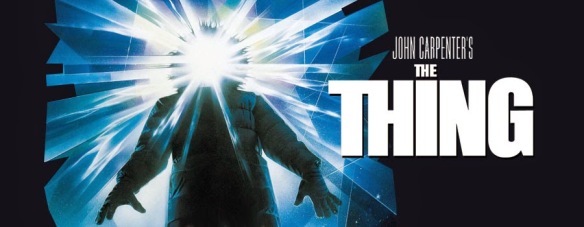When I taught horror film & literature last year, we spent a lot of time trying to define the genre of horror by exploring its limits. One particularly challenging limit to nail down was that between horror and thriller. There is, of course, a lot of overlap between the two. For starters, they both include fear, suspense, and violence. Murderers and serial killers are common inhabitants of both genres.
However, despite the blurred lines between the two genres, they are distinct. They feel distinct. They are differentiated from each other by the emotion they aim to evoke in their audiences. And as I was drifting off to sleep last night, considering this distinction, I had this thought that I want to briefly explore as a way of illustrating the difference between the emotions of the two genres: A thriller is a rollercoaster ride; horror – at least, good horror – is a car crash.

Silence of the Lambs (1991) is one of the examples my students raised as a film that sits at the border between the two genres. The film features a monster (Hannibal Lecter – sociopath, serial killer – is a human monster), puts the protagonist in danger, and induces fear and/or anxiety in the audience. Seven (1995) works similarly, but it also contains procedural elements that distract from horror’s typical emphases.

When we defined horror in class, these are the central ideas we agreed upon to limit the genre:
- Horror includes the threat of death and/or madness.
- Horror includes or is about the violation of our expectations or social norms.
- Horror includes the emotions of fear, dread, and/or anxiety.
Thrillers, like Silence of the Lambs and Seven, include the threat of death and emotions of fear, dread, and/or anxiety. They emphasize the short-term emotions that the class’s definitions attribute to horror. They work on adrenaline and the immediacy of plot and suspense. Their central questions include: What’s going to happen next? Will the hero(ine) save the potential victim in time? Who is the actual villain? Like a rollercoaster, there are ups and downs, thrills (hence, the name of the genre), but these sensations do not extend outside of the limits of the film. The killers in these films may not violate our expectations or social norms; they do not challenge our sense of the world. As another example, I think of The Fugitive (1993). The driving tension of The Fugitive is our anxiety for its protagonist and his situation (will he escape? will he uncover the truth?), not any sense that the reality we generally accept is under threat or in question. You leave the movie (or rollercoaster) and go on with your life, unchanged, not seriously affected.
Horror, on the other hand, goes beyond this. It presents a different type of fear, a potentially more lasting kind of fear. Now, to be fair, not all horror films achieve this – and some do not achieve this for all viewers. I am considering, both with thrillers and horror, the best (or perhaps the most representative) of each genre.

Where the fears of a thriller may quickly fade, therefore, as does the adrenaline from a rollercoaster ride, the emotions evoked by horror can be more lasting, like the feelings after even a minor car crash. The experience of being in a car crash leaves one shaken; it forces an acknowledgement, however brief, that the life that feels so safe and secure is really not. Driving, something we do so routinely, is actually dangerous and, despite our confidence in our ongoing existence, we could die at any moment. Similarly, horror raises questions about the rules of the world we live in and think we understand. What if our bodies are taken over and we lose control of ourselves – whether via aliens or the supernatural? What if the people around us are not what they seem? What if we only think we are sane? The world is shown to be unsafe, insecure.
The best horror has certainly left such an impression on me. For instance, The Babadook (2014) not only upset and terrified me while I watched it, but left me thinking about it for days afterward. And even now if you were to come up to me and say “Ba-BA-ba dook! dook! dook!” it would probably freak me out a bit. The film shook me up – both because of the monster and because of what it represents. I wasn’t able to easily walk away from it as simple entertainment; it got at something deeper.





Great analysis, Christy. Would you be interested in sharing this (as well as any of your other horror posts) with our readers on moviepilot.com? We have a large horror community who I think would love to read some of your work!